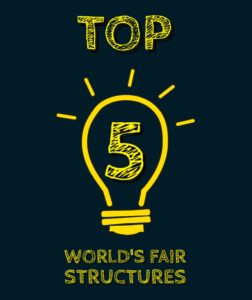
Early World’s Fairs were held with regularity to share the newest technology, advancements, products, art, entertainment and more with the millions who visited.
Nearly every World’s Fair boasted a large centerpiece – a daring creation that displayed the great abilities of the host nation – and something that could serve as a giant icon for the fair.
You might be surprised to learn which structures made their debut at a World’s Fair. Here’s our favorite five from the past.
#5 The Space Needle

In the 1960’s, the world was obsessed with space. Americans and Soviets were scrambling to be the first on the moon. Space was also all over popular culture, as the final frontier captured the imagination with it’s unsolved mysteries. Perhaps that’s why the 1962 World’s Fair in Seattle, Washington structure is so other-worldly. It’s called the Space Needle, and to many people the round structure near the top resembles a flying saucer. To others the slender shape is reflective of the “space age.”
Built to withstand terrible winds and intense earthquakes, the tall, thin structure today is a symbol for one of the West Coast’s most unique cities.
#4 The Atomium
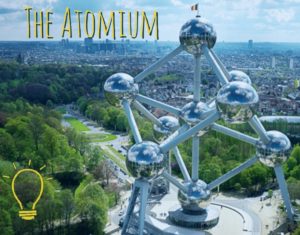
If the 1960’s were about space, the 1950’s were about scientific progress and what it meant in shaping our future. Built for the 1958 World’s Fair in Brussels, Belgium, The Atomium was part-building, part-sculpture, and an all-amazing tribute to the gifts of science.
The 335-foot tall structure depicts an iron unit cell. Originally set to be demolished after the fair, it still stands today and houses a museum.
#3 The Statue of Liberty (sort of, at least part of her, anyway)
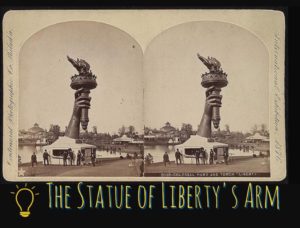
Frederic Bartholdi’s first idea for a gigantic figure holding a torch was to be a lighthouse at the entrance of Egypt’s newly opened Suez Canal. When his idea was not chosen, his mind shifted and he began to envision the structure in New York Harbor, the first place so many immigrants would see as they arrived in America.
The statue, with the internal structure to be built by Gustave Eiffel, was not complete for the 1876 Philadelphia World’s Fair. Only part of Lady Liberty was ready for the fair celebrating America’s 100th birthday. On display in Philly was her right arm holding the now-famous torch.
For 50 cents, guests were invited to climb the arm and walk around the torch. The proceeds were used to pay the cost of the pedestal on which the statue stands today.
#2 The Ferris Wheel
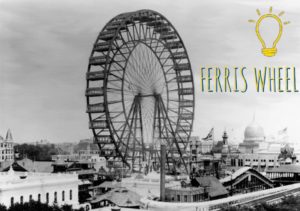
The 1893 Chicago World’s Fair was amazing and one of the most important in history, but it almost didn’t happen. When it opened, the now long-gone “White City,” as the grounds were called, thrilled people from all over the country and beyond.
Looking for a way to compete with the Paris World’s Fair centerpiece (which is number one on our list), the Chicago organizers wanted something huge and bombastic to tower above the fairgrounds. So George Washington Ferris Jr’s idea was chosen.
The Ferris Wheel at the Chicago Fair was the first of it’s kind, and certainly a unique alternative to……..
#1 The Eiffel Tower
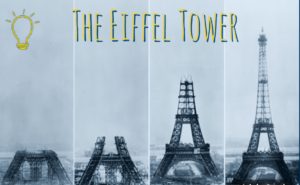
A decade or so after working on the structure of the Statue of Liberty, Gustave Eiffel and Maurice Koechlin proposed a tower to be built for the 1889 World’s Fair, which celebrated the 100th Anniversary of the French Revolution.
At the time, many people in Paris detested The Eiffel Tower. Some thought it was dangerous and unstable. Many just thought it was an ugly eyesore. Ironically, the tower is the most iconic symbol of Paris today and is still the most visited paid attraction in the world.
Not bad, for something that was supposed to have been torn down after the Fair was over.

jack
hi i love your podcast
Mick Sullivan
Thanks, Jack!